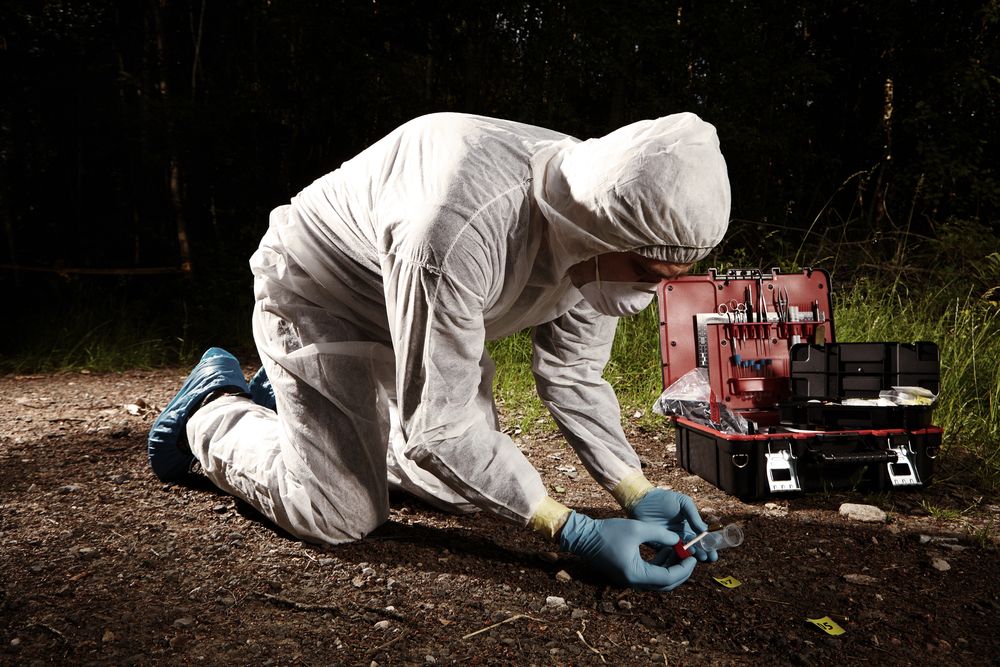Time of Death? Check the Body's 'Necrobiome'

It's a line you'll hear in almost any crime show after someone finds the body — the detective turns to the medical examiner and asks, "Time of death?" But in real life, medical examiners don't have a very precise method for figuring out how long ago someone died.
Now, researchers say they could use the bacteria found on the body to provide a more accurate way to pinpoint the time of death, according to a new study.
In the study, published today (Dec. 22) in the journal PLOS ONE, researchers examined the "necrobiomes" of 21 cadavers. The necrobiome, or the community of bacteria found on a dead body, changes considerably as time passes after death and the body decomposes, according to the study. [The Science of Death: 10 Tales from the Crypt and Beyond]
Currently, medical examiners estimate the time of death by physically inspecting the body for signs of early-phase decomposition and, in later stages of decomposition, by looking at the insects present on the body, the researchers wrote. But "these techniques are notoriously unreliable," thanks to factors such as temperature, weather conditions and geographic location, the researchers wrote.
But "by knowing which microbes take over a dead body and how long it takes, forensic scientists might be able to use [the necrobiome] to determine time of death or other aspects of a crime scene," Robert DeSalle, curator of molecular systematics at the American Museum of Natural History in New York, said in a statement. DeSalle was not involved in the study.
In the study, the researchers took samples of bacteria from the ear and nasal canals of the cadavers, which were at the Anthropological Research Facility at the University of Tennessee, Knoxville. The cadavers were placed outdoors, in a temperate, deciduous forest, and were left to decompose naturally over the course of several weeks.
The researchers sequenced the DNA of the bacteria, and used their findings to construct a model that could predict a body's time of death to up to 55 "accumulated degree-days," which is equal to about two summer days.
Sign up for the Live Science daily newsletter now
Get the world’s most fascinating discoveries delivered straight to your inbox.
Accumulated degree-days are a way to measure the passage of time and temperature simultaneously, said senior study author Nathan Lents, a professor of microbiology at John Jay College of Criminal Justice at The City University of New York.
Because human decomposition is strictly dependent on both time and temperature, scientists cannot consider the passage of time alone, Lents told Live Science. "When it comes to rates of decay, one day in summer time is like two weeks in winter time," he said.
A dynamic ecosystem
The bacterial communities found on a dead body change over time, Lents said.
"Think about a decomposing vertebrate as an ecosystem" teeming with various life-forms, Lents said. "The ecosystem is very dynamic because the environment of the decomposing host is in a state of wild changes."
For example, cycles of high and low oxygen levels play a role in which bacteria are present, as oxygen is consumed and carbon dioxide builds up in the body. But the body's tissues eventually rupture, and oxygen flows back in, changing the environment again. There are also cycles of high and low nutrient richness, Lents said; nutrient levels may be low until a tissue ruptures and nutrients spill out.
Ultimately, "the environment is a feeding frenzy for alternating groups of organisms, setting up a succession of bacteria that proliferate when their time comes," Lents said. [Ear Maggots and Brain Amoeba: 5 Creepy Flesh-Eating Critters]
But researchers still have a great deal to learn about this ecosystem, Lents added.
The new study is "a very promising proof of concept," Lents said in a statement. Still, the method could be improved by adding more data, from a larger study at multiple locations, and involving bacteria from additional parts of the body, they wrote in the study.
Originally published on Live Science.













